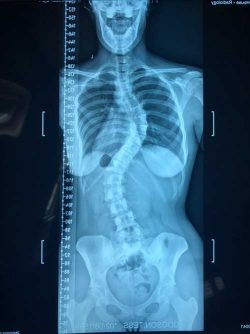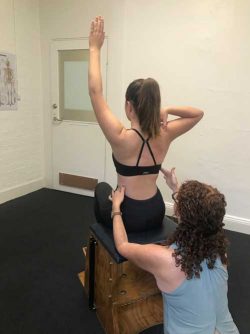Curvy Bodies: Pilates for Scoliosis
Do you work in Allied Health as a Pilates Instructor, Osteopath, Exercise Physiologist or Physiotherapist? Do you regularly see clients with Scoliosis and would like a better understanding of this condition and how you can help them? Given 3% of the population are affected by Scoliosis, the chances are you will eventually have a client present to you with this condition, if you haven’t already?
My name is Helen New, I’m a Principal Practitioner of The Pilates Method, Owner/Manager of two Pilates studios, a Faculty Educator for National Pilates Training and for the last 9 years have been specialising in Scoliosis. I’m currently the only Authorised Scolio Pilates® Practitioner in Australia and I want to share my expertise & passion for treating clients with this condition with more Australian practitioners.
Scoliotic spines need to be worked differently.
Scoliotic spines are not symmetrical (stating the obvious right!) and yet so many instructors I meet still work their clients bilaterally in all their work. When there are muscular imbalances in the spine (sometimes quite significant), it doesn’t make sense to load that body evenly. Why not? Because the “bossy muscles” on the convex side of the curvature will take on more of the work and get “bossier” and the muscles on the concave side won’t have a chance to strengthen.
I often hear instructors say they thought they could work the body evenly as long as they “stretched the tight side last”! But which side is the tight side? A client with an atypical 3-curve scoliosis will have a lumbar convexity to the left and a thoracic convexity to the right. If I take that client into lateral flexion to the left, their lumbar will lengthen out but I’ve just increased their thoracic curvature…So how is that smart? And I also need to take into account the rotation that’s happening in the spine. Confused? Understandable! It’s a complicated condition but one that as movement practitioners we need to understand better.
Client case study.
The following pictures are of my client Tess. I detected her Scoliosis when she was 11 years old. At that time she had Cobb angles of 50 degrees in her lumbar and 45 degrees in her thoracic. She was told that she was out of bracing range and spinal fusion was recommended. Given her large curvature at onset, it was predicted that it would increase quickly and significantly.
Tess has attended regular sessions with me since then but she still hasn’t had surgery! She will be 20 next month. During her teenage years (that delightful time around Year 9) she wasn’t very diligent with her exercise program and her curvature increased to the low 60’s. Once she made a consistent effort to commit to her exercise programme, we have reduced these numbers again and her most recent x-ray taken in February this year showed her Cobb angles to be 51 degrees in her lumbar and 53 in her thoracic.


Pilates can help clients with Scoliosis
I see a huge variety of clients for Scoliosis, ranging in age from 10 years old through to 70. Some have small curves, some have large curves, some have pain, some don’t! But what they all have in common is they leave my studio standing taller, breathing easier and if pain is a factor when they walked in, it has usually gone (or at least subsided) when they leave!
If you’d like to better understand how to work with scoliotic clientele, I’d love to see you at my upcoming workshop “Curvy Bodies – A Deeper Look at Scoliosis”.
